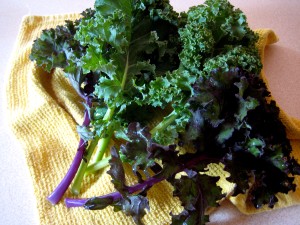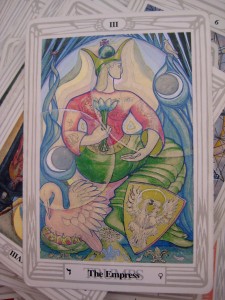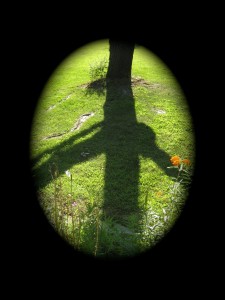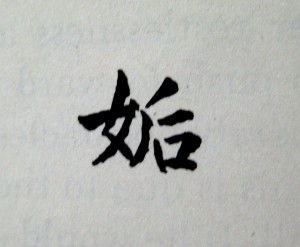
– Photo by Jan Ketchel
Food sustains life, satisfies the tension of hunger, and protects the body from illness and death. Food is Mother. For all, in utero, food was delivered from mother’s body and for many, post utero, this continued in the experience of nursing at mother’s breast. Finding our way in childhood to the independent obtaining of food—e.g., through opening the refrigerator door—is a giant leap toward gaining control over one’s security of survival, relief of tension and protection—the beginning of becoming our own mother.
Ruptures in security with actual mother in the early dependency years of childhood heighten the significance of gaining control over one’s own access to food. Food may become the safer and much more reliable mother when contending with a depressed, indifferent, withholding, competitive or abusive actual mother in childhood. Secretly, food becomes the real mother, while the actual mother is experienced as marginal at best.
In such rupturing circumstances food takes on the psychological role of soothing and caring for the emotional wellbeing of the child. The child may discover the excitement and reward of relationship with sugar, the soothing of anxiety with excess food, as well as the protective, dissociative numbing provided by a very full stomach. Excess weight may gather with excess food, which can protect the self from the sensations and feelings of rejection, lack of connection, and ridicule from without, as well as fear and sadness from within.
A hyper attachment to food in childhood may be the saving relationship that protects one’s autonomy and very vulnerable self through deeply turbulent formative years. In adulthood, these patterns of attachment will prove anachronistic and become impediments to more deeply satisfying emotional relationships. At the same time, they must be valued for the survival and protection they once afforded our growing selves, as well as their incubational functions at extremely vulnerable times in our lives.

– Photo by Jan Ketchel
The task in adulthood is to free the innocent self—still held in body utero—of its private dependence on food for excitement, calm, and protection and birth into full life and real human relationship. The challenge for the adult self is to fully take on the role of mother previously delegated and attached to food. We are charged with becoming our own living mother to our tucked-away innocent self. This is a real human relationship that asks us to be compassionate, supportive, accepting, and encouraging to our shy, innocent self who has waited for decades to truly come out and play.
The defenses that have long sheltered our innocence, with their attachment to the secure food mother, are formidable and deeply challenging of the adult self’s attempts to assume parental leadership within the personality. Those defenses see no wisdom in freeing our innocence into a world where, once again, it will be exposed to rejection and possible annihilation.
The adult self is frequently undermined in its attempts to assume control by waves of deep terror and intense cravings that seem compellingly unquenchable by anything short of the sustenance of food. Perhaps these may be interpreted as labor pains of the birthing process, the innocent self questioning the readiness of the adult self to safely deliver it into life. Sometimes the proving process of the adult self, as it proves its readiness, requires many false labor pains, ending in a return to food. But be assured, each round of labor readies the mother more fully to become the perfect mother to her innocence, which she will someday deliver to the world.

This evolving mother knows full well the limitations of the outer world archetypal maternal matrix that in childhood had it creatively adopting food as the more reliable mother. This new mother knows there is vulnerability and rejection and loss to face in this world, but she also knows that she is fully capable of protecting and helping her innocence through the unavoidable woundings of life in this world. But this mother also knows the utter joy and necessity of bringing her deepest needs and desires into life in this world as part of the fulfillment, completion, and individuation so necessary for wholeness and enjoyment of life.
Food Mother will always have her place, but the living Mother of the adult self is the True Mother to full mind, body, and spirit living.
Let that True Mother be compassionate and supportive of wherever we are, as well as firm and encouraging as she takes full responsibility for birthing innocence into life beyond the old protectorate of Food as Mother.
Appreciating the journeys we all take,
Chuck
NOTE: Obviously we all have a True Mother inside us, men and women alike, and it is our challenge and charge to bring her to life, just as all of us have a True Father inside us too, but that is another blog!








